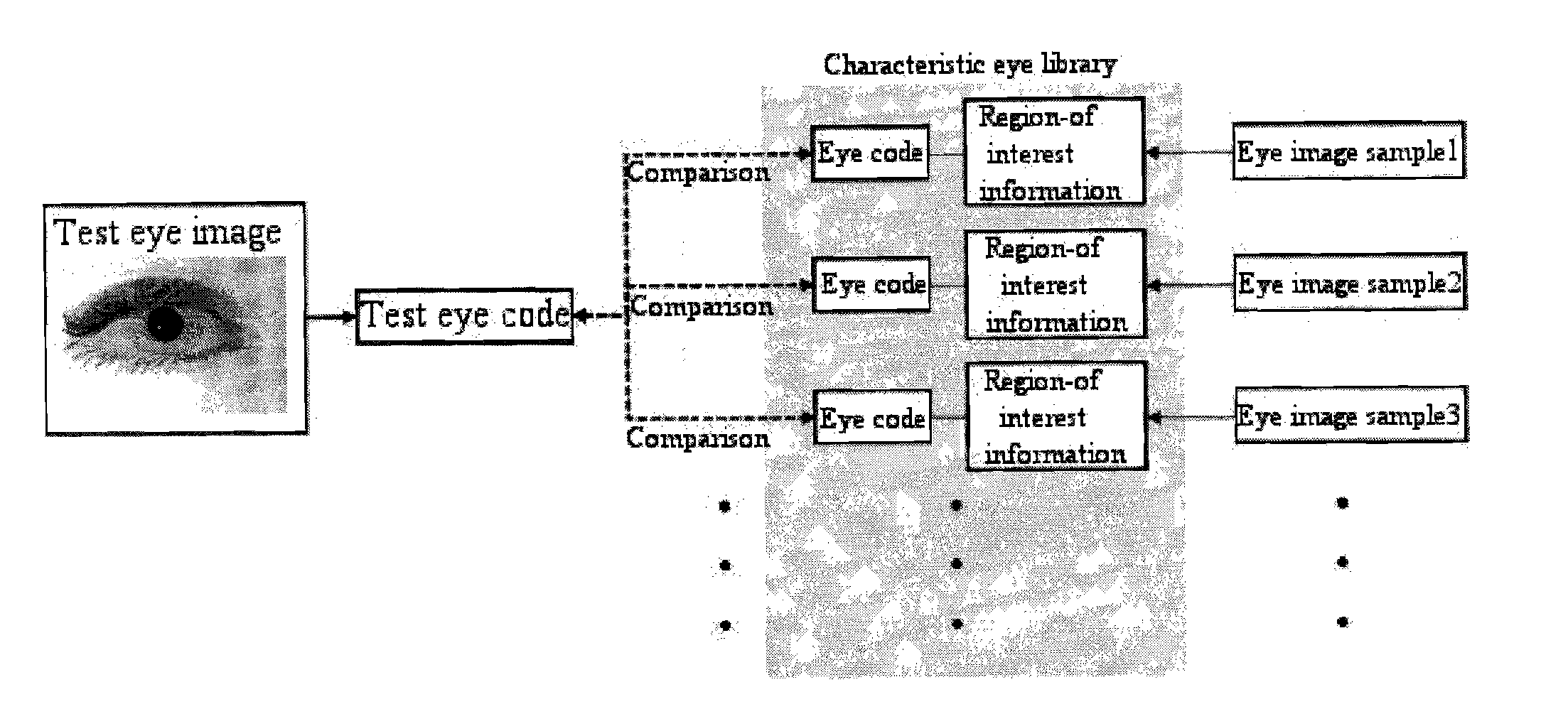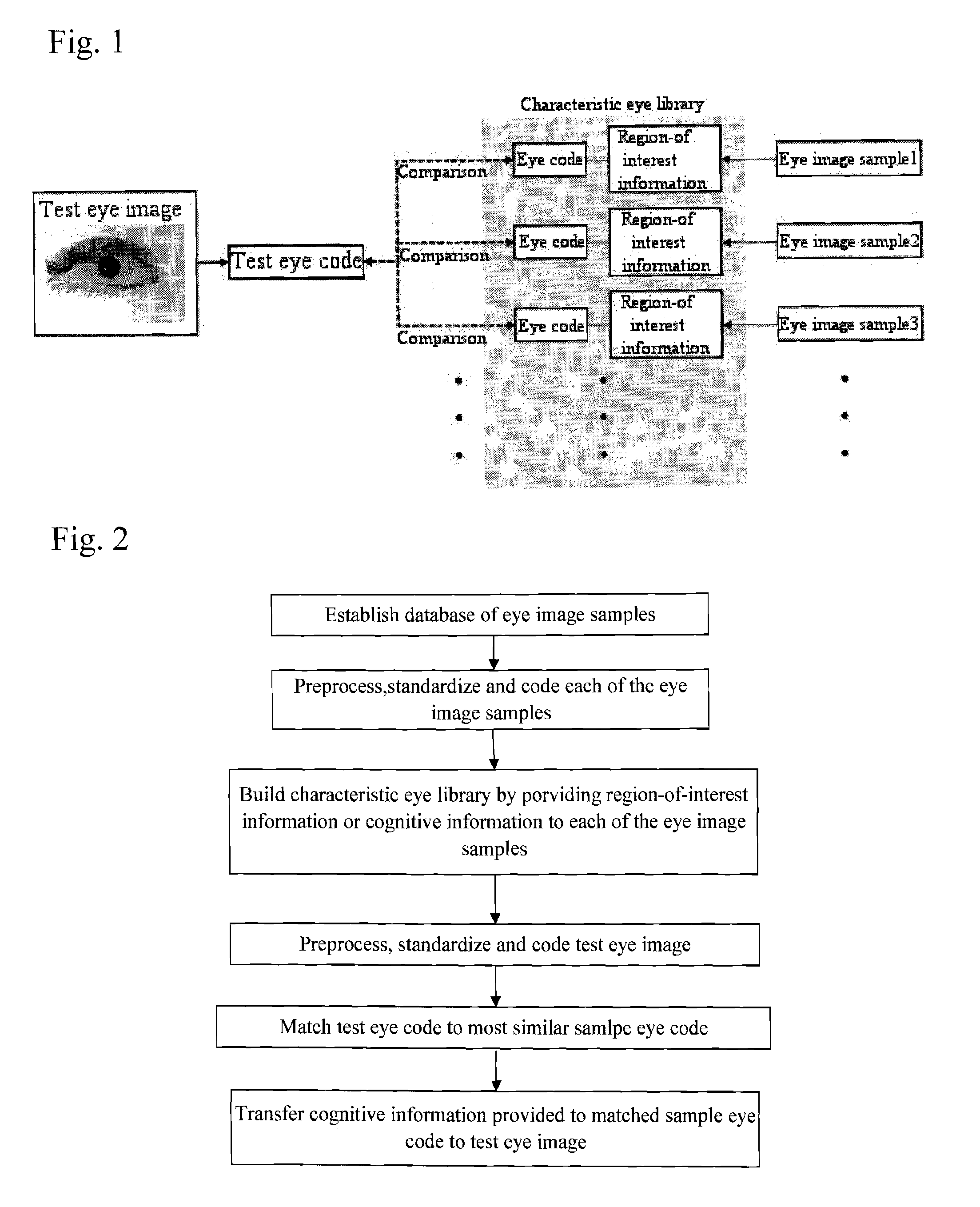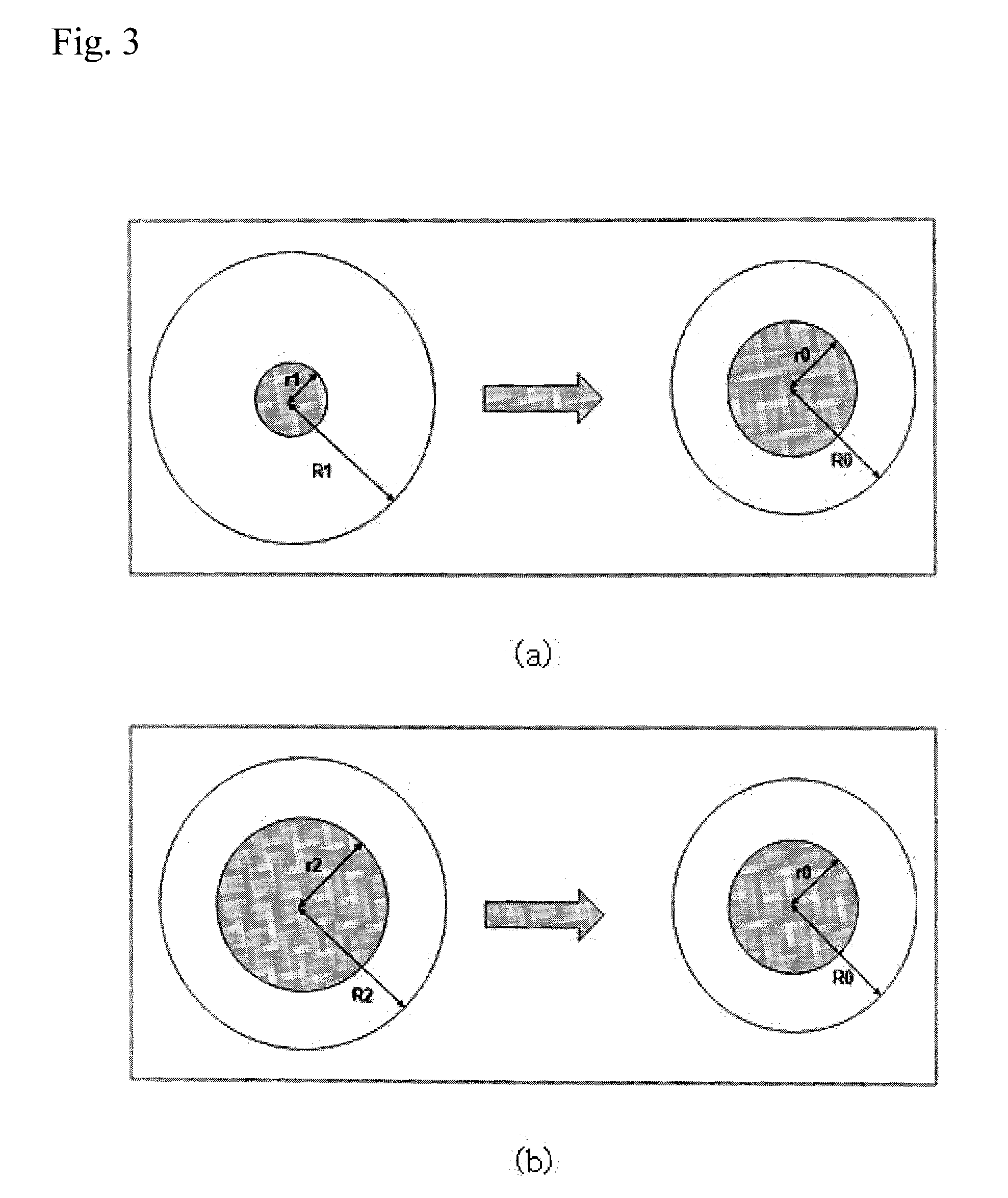Method for acquiring region-of-interest and/or cognitive information from eye image
a cognitive information and eye image technology, applied in the field of eye image acquisition, can solve the problems of difficult to correctly obtain this information or obtain an eye image in a desired direction, difficult to set up the boundary of the iris region, and the most difficult operations in digital image processing, so as to increase the iris recognition rate and reduce the time for retrieval
- Summary
- Abstract
- Description
- Claims
- Application Information
AI Technical Summary
Benefits of technology
Problems solved by technology
Method used
Image
Examples
Embodiment Construction
[0033]Exemplary embodiments of the invention will be described in detail with reference to accompanying drawings. FIG. 1 is a concept view of a method for acquiring region-of-interest and / or cognitive information according to an exemplary embodiment and FIG. 2 is a flowchart of the method for acquiring region-of-interest and / or cognitive information according to the exemplary embodiment.
[0034]First, establishment of an eye image sample database according to an exemplary embodiment will be examined. To make a characteristic eye library, a set of eye image samples is first configured. Generally, the term “eye image” means a digital image of an eye and an extended region including the periphery of the eye.
[0035]The set of eye image samples may be configured in various ways to have large variation in terms of region-of-interest information or cognitive information. For example, if desired region-of-interest for a certain eye image is information about an eye region exposed to the outsid...
PUM
 Login to View More
Login to View More Abstract
Description
Claims
Application Information
 Login to View More
Login to View More - R&D
- Intellectual Property
- Life Sciences
- Materials
- Tech Scout
- Unparalleled Data Quality
- Higher Quality Content
- 60% Fewer Hallucinations
Browse by: Latest US Patents, China's latest patents, Technical Efficacy Thesaurus, Application Domain, Technology Topic, Popular Technical Reports.
© 2025 PatSnap. All rights reserved.Legal|Privacy policy|Modern Slavery Act Transparency Statement|Sitemap|About US| Contact US: help@patsnap.com



